The artwork that we hold dear to us may not only visually represent the past, but bring with it the personality and philosophy of the person who created it. This was the case with a large collection of paintings that came to our attention following a devastating flood. The artist was our client’s husband, actor and artist Barrie Hesketh. His artworks were remarkable not only for their skill, but also for the new artistic expression within their composition – an experiment of peripheral vision that he had also recorded in writing.
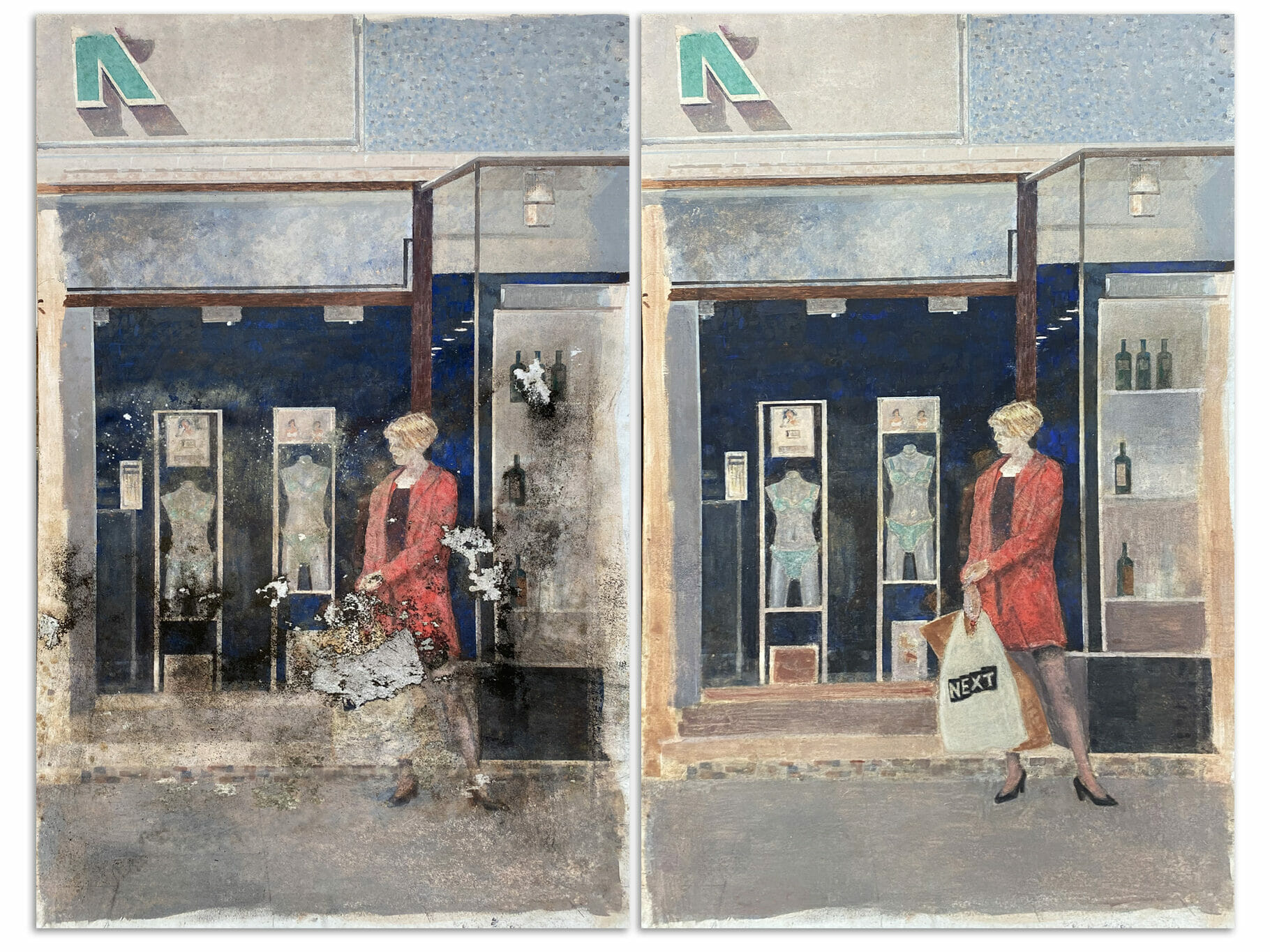
At the time of the disaster and subsequent damage to the collection, Barrie was in failing health and passed away whilst talks between our team, his wife Philippa and an insurance company were in progress. This made the preservation and revival of the paintings even more of a priority for all involved. After a successful agreement with their insurer, we were able to fully restore and re-frame 88 of Barrie Hesketh’s paintings, securing his artistic legacy and philosophy for future generations.
 Above: one of the artworks before and after restoration, this piece displays the artist’s bowl-like vision theory
Above: one of the artworks before and after restoration, this piece displays the artist’s bowl-like vision theory
Barrie Hesketh: his life and art theory
“By profession, Barrie Hesketh was an actor – twenty years before I met him (in 1985), he’d co-founded The Mull Little Theatre on the Isle of Mull, off the West Coast of Scotland. However, his first love and abiding passion was art and painting: he would tell people that he’d come into theatre via the scene-dock! He was knowledgeable about the history of art; and his lifelong mentors were Shakespeare and Velasquez.
 Above: one of Barrie Hesketh’s paintings before and after restoration in our studio – this piece features a reference to Rembrandt’s ‘Woman bathing in a Stream’ from 1654
Above: one of Barrie Hesketh’s paintings before and after restoration in our studio – this piece features a reference to Rembrandt’s ‘Woman bathing in a Stream’ from 1654
Many of his paintings were inspired by the landscape in which he found himself at various points in his life (Derbyshire, Mull, East Anglia); as well as by his familiarity with the classics of Ancient Greece. There was another particular interest which informed his approach: since adolescence, he had been intrigued by the phenomenon of peripheral vision.”
– Philippa, Barrie Hesketh’s wife
 Above: an abstract painting from the collection featuring a self portrait
Above: an abstract painting from the collection featuring a self portrait
Hesketh’s ideas about peripheral vision are clear throughout the majority of his works. Many take on a bowl-like shape as he experiments with painting precisely what he can view. This way of training his eyes has allowed him to uniquely capture what our eyes see when we are not conforming to the usual rectangular canvas of painting or photography. In this way he attempts to capture the true sight that he is experiencing, not the flat reproduction of reality found in conventional scenes. In his own words, this is Barrie Hesketh’s approach to art and vision:
“I remember exactly when it was that I first became aware of the importance I attach to peripheral vision. I was reaching the end of my time at school, Buxton College, and I had been out on the weekly cross-country run. The run had taken me past Solomon’s Temple – a landmark overlooking the town – and by now I’d arrived back at the school and was taking a pause for breath, sitting by the covered walkway round the quadrangle. My gaze came to rest on the branches of the tall, leafy tree growing on a patch of grass in the middle of the quadrangle and it was there that I noticed what I can only describe as a correspondence between eyes and brain. It served to confirm the idea that the act of looking was a physical experience.
 Above: one of the artworks before and after restoration by our team
Above: one of the artworks before and after restoration by our team
I didn’t have a thought in my head – just let my gaze wander and, slowly but surely, it seemed that the pillars supporting the roof of the walkway were curved – not straight, as they had been when looked at directly… With hindsight – and thanks to wildlife and nature programmes on TV – I realise this must have been the moment when it first dawned on me the fundamental importance of peripheral vision for the gathering of life-saving information. Furthermore, in that it derived from the way shapes and colours appeared to change and come alive as I took in my surroundings, it was more than that: it was a magical resource.
 Above: this artwork includes the use of curved peripheral vision to give a view of Hesketh’s home interior
Above: this artwork includes the use of curved peripheral vision to give a view of Hesketh’s home interior
All I had to do was allow time for the effect to take place: whilst focusing on one specific spot, I let my field of vision and all within it take on whatever shape it would. In other words, it sometimes felt like giving more attention to what was happening at the corner of my eyes then to the point of focus. Broadly speaking, pictures have tended to be confined within frames with right-angled corners – a tradition no doubt dictated, in part at least, by cost: it’s cheaper to use a rectangular wooden frame than to construct one without corners – even though a frame without corners might be what the artist would have preferred.
 Above: some of the paintings had warped due to moisture, these were sensitively flattened with conservation treatments
Above: some of the paintings had warped due to moisture, these were sensitively flattened with conservation treatments
Later on in my life, after I’d moved to the Isle of Mull off the west coast of Scotland, I was influenced by the entrancing changes of light across land and water. It was here that I found my peripheral cut-off following the shape not so much of a bowl as I thought it might, by no means the most attractive of shapes but, to my way of thinking, truer to nature than the ubiquitous rectangle.”
– Barrie Hesketh, 2017
 Above: the mould contamination was cleared away with professional conservation techniques
Above: the mould contamination was cleared away with professional conservation techniques
The restoration
From this account it is clear that this collection of artwork is of the utmost importance to Barrie Hesketh and his family, especially a portrait of his wife that had been a gift for her 60th birthday. The disaster left many of the 88 affected paintings with mould growth and water staining, in some cases completely distorting the original composition. The canvas board had also begun to warp due to the water damage, making them unstable and unable to be displayed.
 Above: our conservator Sophie cleaning the mould spores away with small cotton swabs
Above: our conservator Sophie cleaning the mould spores away with small cotton swabs
The first step was to collect the artworks from Philippa’s home, this was arranged by our team and our driver safely removed them to bring to our Cumbria studio. Here, they were treated with an o-zone machine, this eliminates mould spores and prevents them from growing further. When the mould was no longer active, our painting conservators set to work on removing the contamination one inch at a time with a customised solution. This would allow the mould and staining to come away, whilst not affecting the watercolour, acrylic or oil paint. Weight treatments were also used to reverse the warped canvas boards.
 Above: the mould was eliminated with an o-zone machine before being safely removed
Above: the mould was eliminated with an o-zone machine before being safely removed
During this process, Philippa was kept updated with regular photographs of the work.

All of the artworks were then framed to give them extra stability when returning home. We consulted with Philippa to ensure these were to her preference, so that they could return to display in her home and an exhibition:

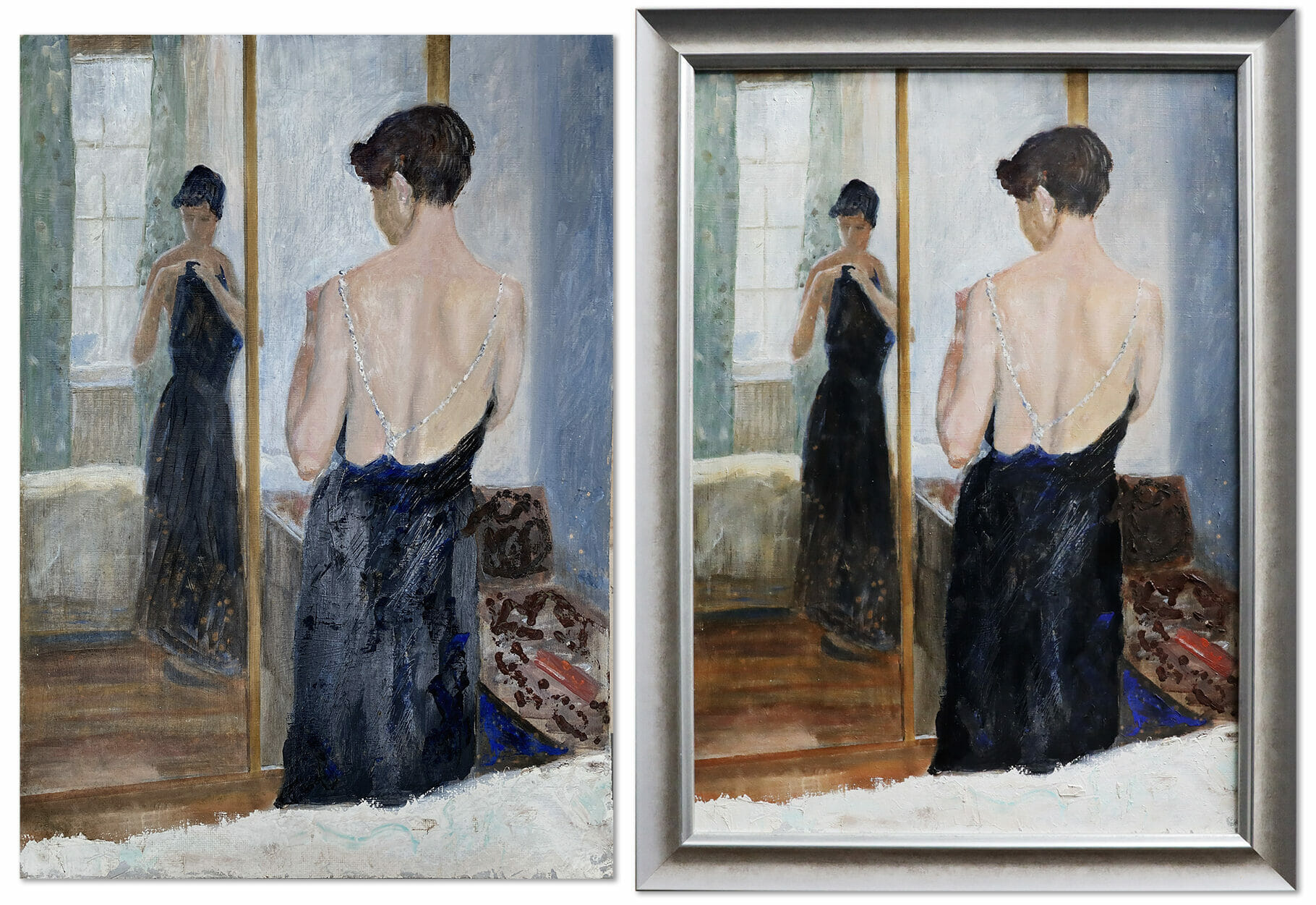
Client response
We were glad to be part of a restoration project that meant so much to our client and to the artistic legacy that her husband had left. These paintings will be remembered by all of our team, from our office staff who helped Philippa achieve insurance funding, through to our delivery drivers, conservators and framers. We look forward to hearing more about an exhibition of Barrie’s work in the future.

How can we help?
If you have a collection of artworks or specialist items that have great sentimental value, our team is on hand to provide you with guidance on what can be achieved by our professional conservators.
To make contact please email us via [email protected] or call 0207 112 7576

 Above: one of the artworks before and after restoration, this piece displays the artist’s bowl-like vision theory
Above: one of the artworks before and after restoration, this piece displays the artist’s bowl-like vision theory Above: one of Barrie Hesketh’s paintings before and after restoration in our studio – this piece features a reference to Rembrandt’s ‘Woman bathing in a Stream’ from 1654
Above: one of Barrie Hesketh’s paintings before and after restoration in our studio – this piece features a reference to Rembrandt’s ‘Woman bathing in a Stream’ from 1654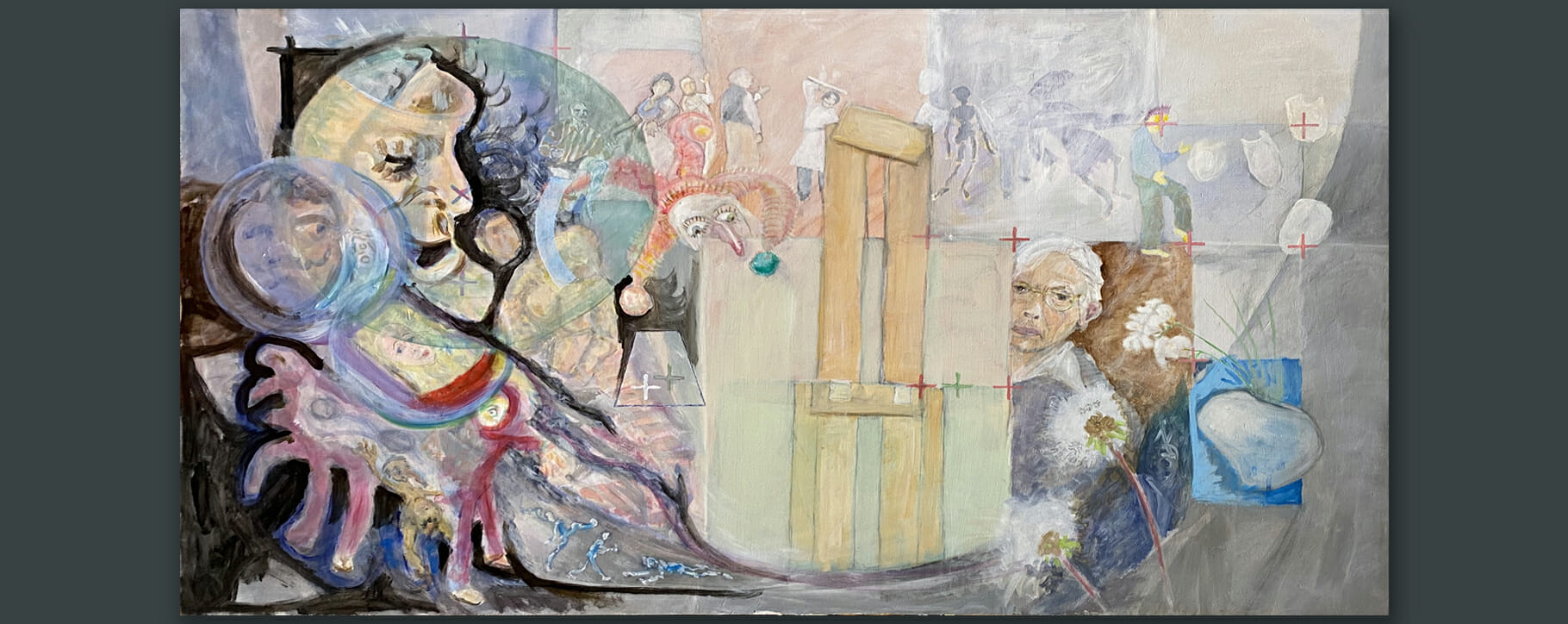 Above: an abstract painting from the collection featuring a self portrait
Above: an abstract painting from the collection featuring a self portrait 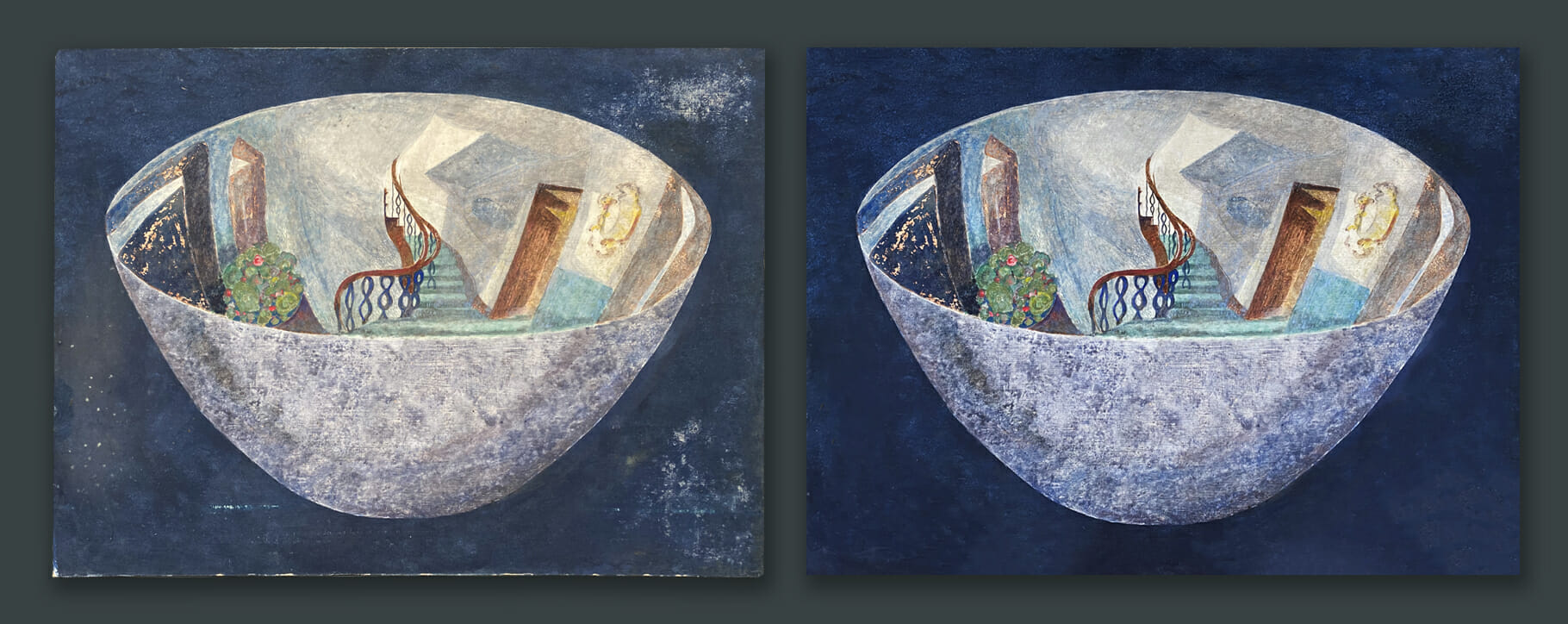 Above: one of the artworks before and after restoration by our team
Above: one of the artworks before and after restoration by our team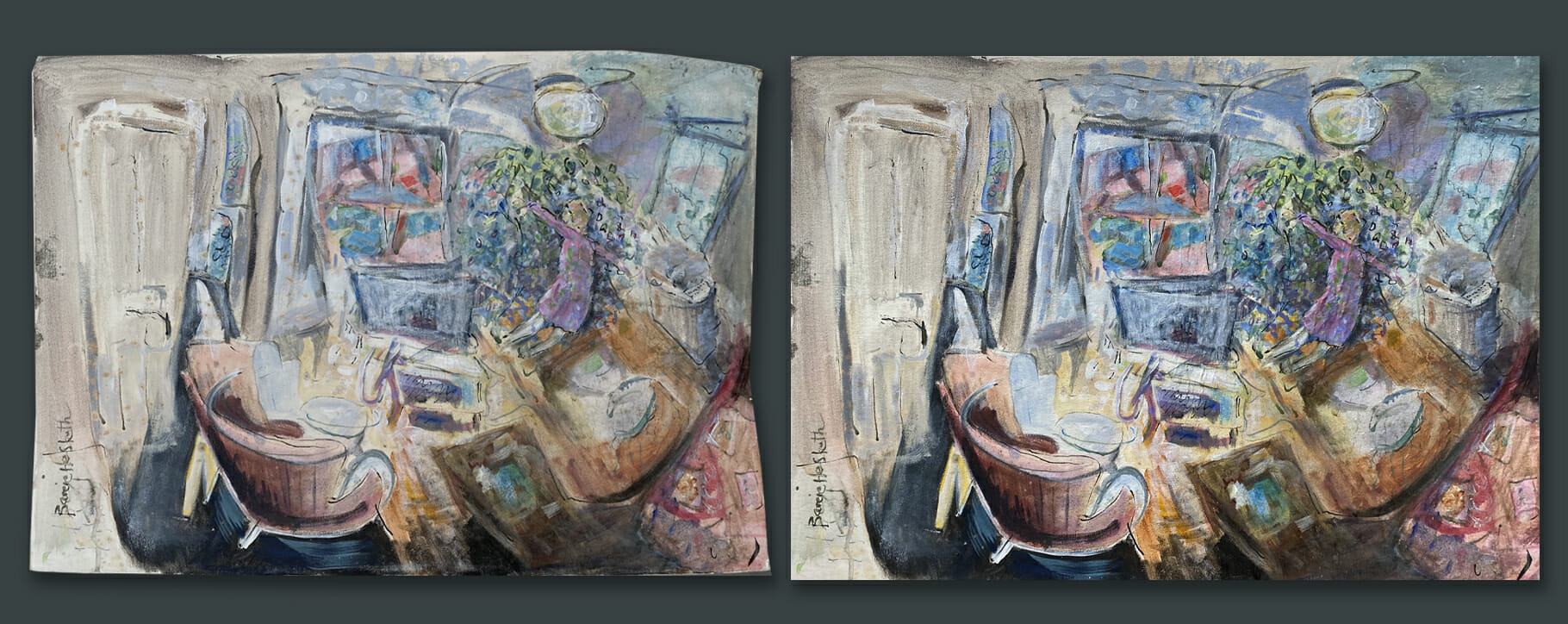 Above: this artwork includes the use of curved peripheral vision to give a view of Hesketh’s home interior
Above: this artwork includes the use of curved peripheral vision to give a view of Hesketh’s home interior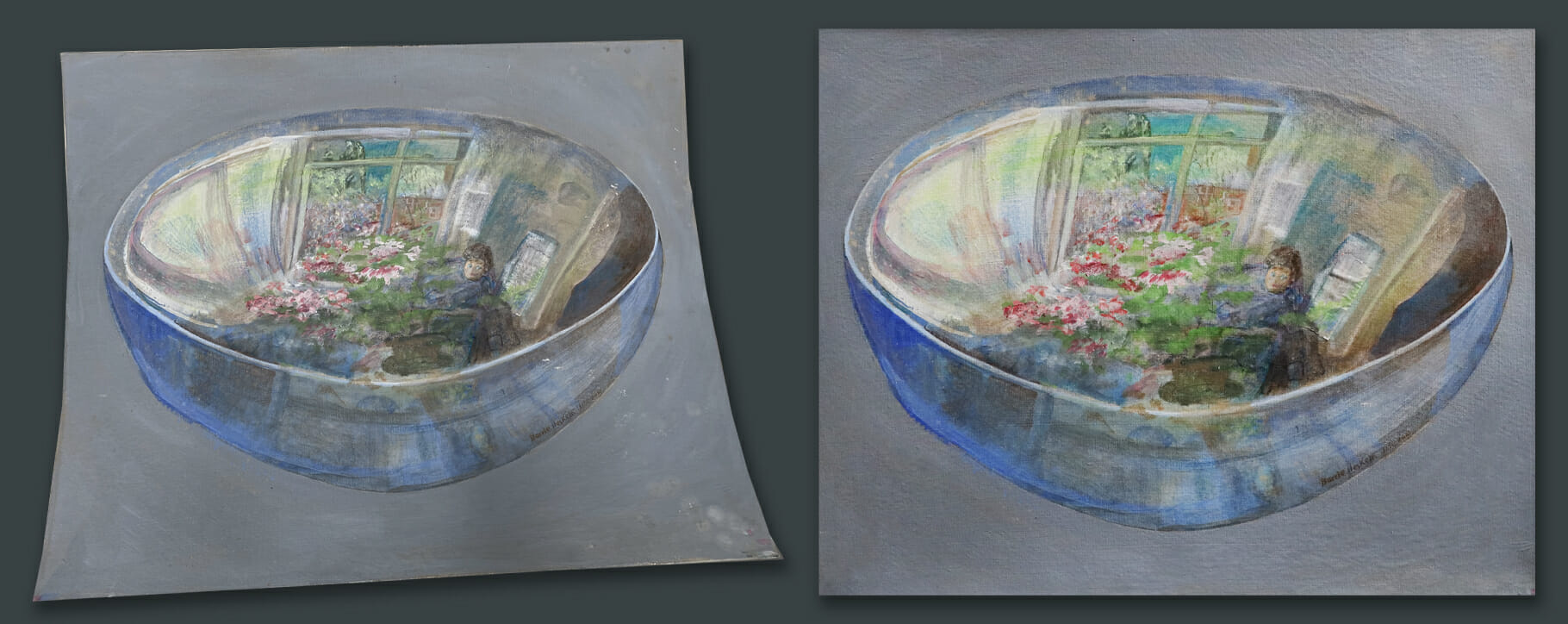 Above: some of the paintings had warped due to moisture, these were sensitively flattened with conservation treatments
Above: some of the paintings had warped due to moisture, these were sensitively flattened with conservation treatments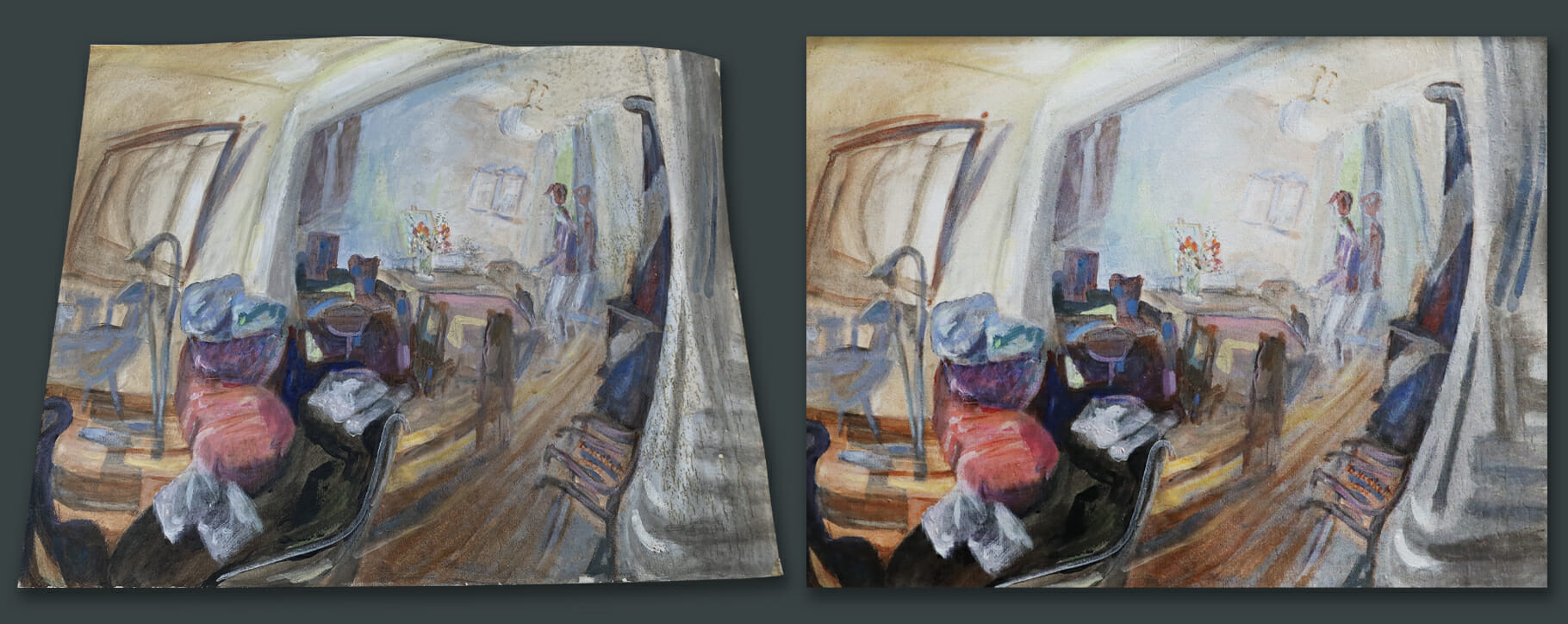 Above: the mould contamination was cleared away with professional conservation techniques
Above: the mould contamination was cleared away with professional conservation techniques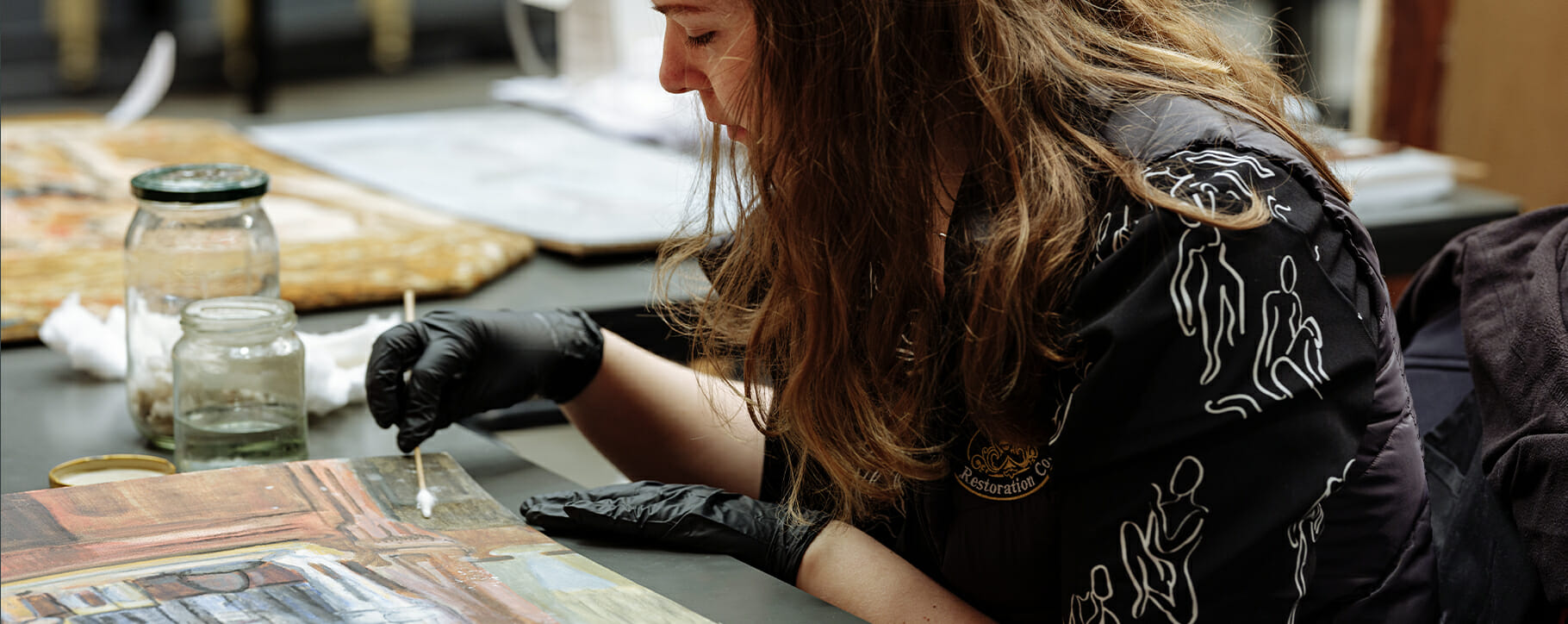 Above: our conservator Sophie cleaning the mould spores away with small cotton swabs
Above: our conservator Sophie cleaning the mould spores away with small cotton swabs Above: the mould was eliminated with an o-zone machine before being safely removed
Above: the mould was eliminated with an o-zone machine before being safely removed




